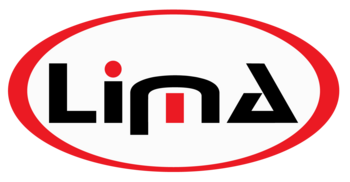Out-of-home (OOH) advertising or outdoor advertising, also known as out-of-home media or outdoor media, is advertising that reaches the consumers while they are outside their homes.
Out-of-home media advertising is focused on marketing to consumers when they are “on the go” in public places, in transit, waiting (such as in a medical office), and/or in specific commercial locations (such as in a retail venue). OOH advertising formats fall into six main categories: billboards, street, roads, highways, transit, and alternative.
The OOH advertising industry in the United States includes more than 2,100 operators in 50 states representing the major out of home format categories. These OOH media companies range from public, multinational media corporations to small, independent, family-owned businesses. Currently, the United Kingdom and France are Western Europe’s first and second largest markets for OOH, respectively. Data from Outsmart (formerly the Outdoor Media Centre), the UK’s out-of-home advertising trade association, shows that digital out-of-home (DOOH) grew at a 29.7% CAGR from 2009 to 2014.
DIGITAL OUT OF HOME (DOOH)
Digital out-of-home (DOOH) refers to dynamic media distributed across placed-based networks in venues including, but not limited to: cafes, bars, restaurants, health clubs, colleges, arenas, gas stations, convenience stores, barber shops, and public spaces. PQ Media defines DOOH by two major platforms, digital place-based networks (DPN) and digital billboards & signage (DBB); DOOH networks typically feature independently addressable screens, kiosks, jukeboxes and/or jumbotrons. DOOH media benefits location owners and advertisers alike in being able to engage customers and/or audiences and extend the reach and effectiveness of marketing messages. It is also referred to as digital signage.
Within the DOOH industry, advertisements may be purchased through programmatic platforms. Programmatic platforms ask marketers to specify desired audience characteristics and automatically locate the media vehicles to deliver that audience. Furthermore, these platforms may allow buyers (the demand side) to plan, execute and monitor campaigns across multiple media platforms (the supply side) using a familiar workflow.
In the U.S., the DOOH industry grew to $2.9 billion in 2015, representing 40.8% of the total OOH spending. Gas stations, restaurants, and bars are the preferred locations for ad placement.[8] With digital TVs in gas stations, nearly 52 million customers are getting snippets of weather, sports highlights, celebrity gossip and commercials with their gas each month, according to Nielsen. The weekly reach is actually larger than most of the prime-time TV shows. The largest company in the space is Gas Station TV with 27.5 million monthly viewers at more than 1,100 stations across the U.S., according to Nielsen.[9] In addition to the large number of viewers, the audience profile of TVs at gas stations is unique. All are drivers and 76 percent are adults from age 18-49 with a median age of 40 and median household income over $70,000.[10] According to the Nielsen Intercept Studies, 89 percent of the consumers are engaged and watching TV at the gas station and 88 percent love watching every time they fuel because they have nothing else to do.
The reason that this category is growing so rapidly is because busy people are typically busy at home and with the introduction and acceptance of digital video recorders (DVRs), it has diluted the frequency with which traditional television commercials are viewed. Every day more TV viewers are skipping past commercials with their DVRs, making out-of-home advertising all the more appealing.[11] A Nielsen media research study in 2009 showed that 91 percent of DVR owners skipped commercials. As a result, traditional TV advertisers are hungry for an effective substitute, and digital out-of-home ads appear to be one of the solutions. Digital out of home advertising seems to be a cost-effective way for promoting or marketing any brand or product. Usage of billboards and displays for brand promotion is a less expensive way of advertising than television, radio, newspapers and other mediums.
DOOH also includes stand-alone screens, kiosks, and interactive media found in public places. The availability of inexpensive LCD screens with built-in media players has opened the door for companies to add interactive video messages in point of purchase (POP) displays. The displays allow consumers to get additional information at the moment of decision on a product or service. Growth in the DOOH industry has been increasing in 2009, with more POP manufacturers, advertisers, and content developers moving to digital. Technological improvements are holding down costs, and low-cost digital signage is making it easier to reach consumers on a larger scale.[12] For example, beacons are small devices placed on out-of-home advertising structures that use Bluetooth technology to connect with mobile devices. “Beacons allow you to communicate with the viewer. They also tell you frequency. With these technologies you could say, for example, with certainty that from 3-5 p.m. on a Monday this is how many men or women walked in front of your sign and also what percentage are new people, which are repeat people, etc.” according to Mark Boidman, managing director at PJSC.
In 2015, DOOH have started to extend to in-transit advertising. Tablets are installed inside popular ride-sharing vehicles like Uber, Lyft and Grab. Digital ads are displayed inside the screens allowing brands to reach to high value passengers. This type of DOOH leverages technology to improvide ad distribution and better OOH audience targeting. GPS of tablets are used to enable location-based marketing. Brands can specify geo-fences to determine where their ads will be shown to the passengers.
Source https://en.wikipedia.org/wiki/Out-of-home_advertising
